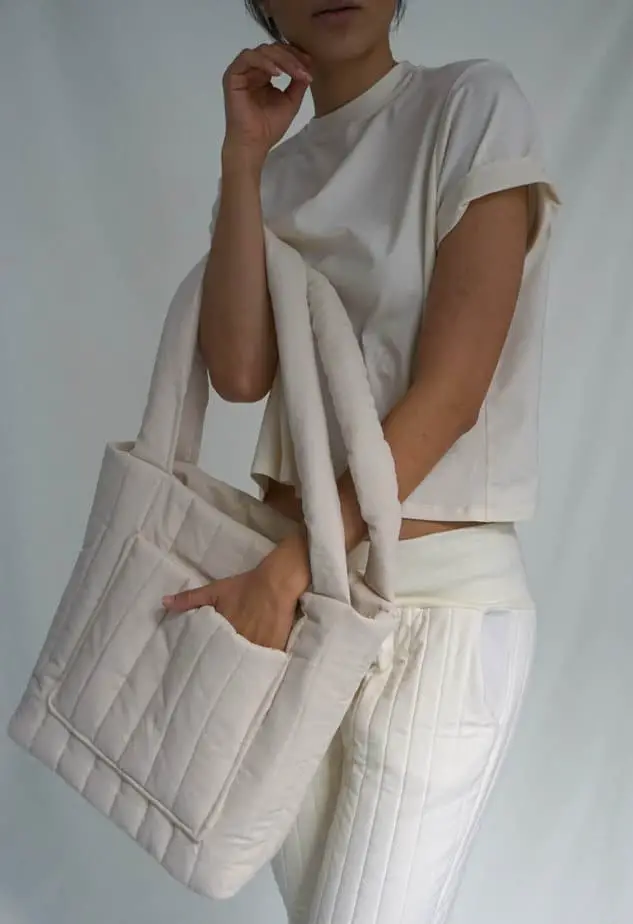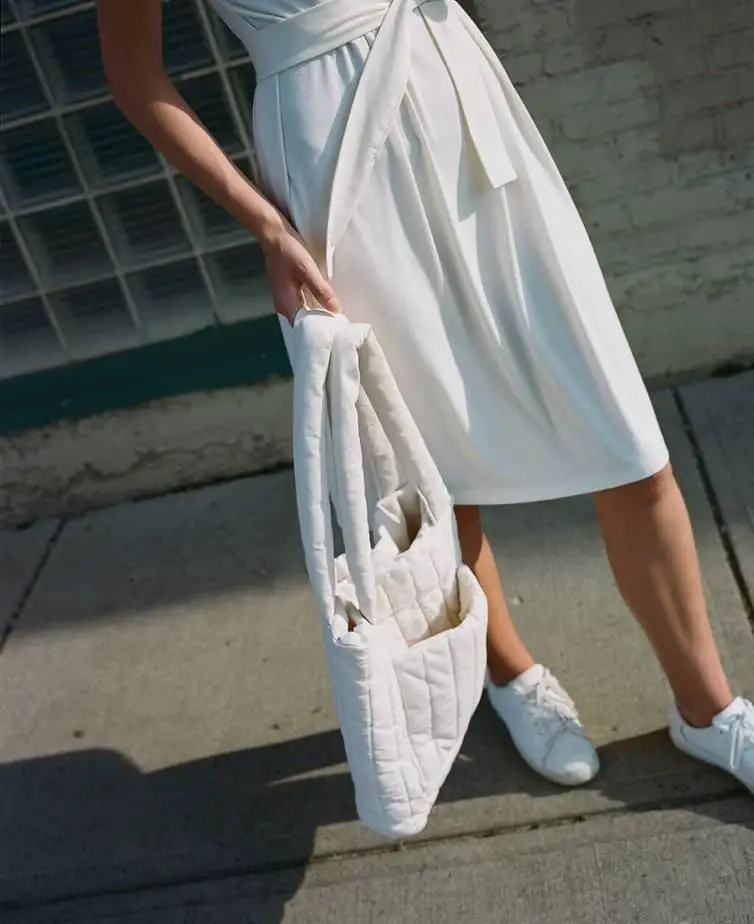We discovered the brand from Yatsuk’s cohort incubator, Fashion Incubator SF, where she learned the business ins and outs. Everything from production, distribution, sourcing, and finances—Yatsuk took the platform and applied. As we learned more from TEXTILEHAUS’ Instagram, Fashion Incubator, the website—we became hyper intrigued. The collection feels so personal, not too staged, not too posey, overall a brand we can see ourselves wearing. Especially where every brand becomes a snake that eats it’s own head—TEXTILEHAUS is doing something different, something left of field.
Over email, we caught up with the busy designer as she chatted with us about her roots, starting the business, and what she thinks about San Francisco in relation to style.
Firstly, thank you for doing this interview with us—we are in love with the TEXTILEHAUS ethos and garments, how did you get started in this industry and what are you focused on today?
Hey there, of course, glad to work with you guys. The story of TEXTILEHAUS starts with a broken ankle. I had just graduated with a Fine Art degree and I did some sewing for performance projects and as photo props but I wasn’t really sure if that was the route I wanted to take in my future professional career. So when the ankle accident happened I was left unable to walk for a while, but that time really allowed me to think about what exactly I wanted to do when I became healthy and able again. I outlined a business model that would allow me to work on tactile projects while learning the business side of things. At first I was only offering made-to-order items and only worked with one textile to produce a collection for each season. The reason for that is two fold: working with one specific textile allowed me to experiment with different styles and follow what that specific fabric “wanted to do” in terms of draping; secondly I was able to work with very little start-up budget. I wasn’t forced to buy different swatches and sample each style with new fabric. That’s how the name for the company came to be.
When going through life, how did you know or feel that fashion was a calling?
Honestly, I would not say that fashion is my calling. Just like any artist I feel like I see things and express myself in my own unique way and I just chose fashion as a medium to work in. At the end of the day, it all comes down to creating a holistic relationship between the visual and product representation of the brand and that is what I am most excited about.
You have a selection of cult favorites, and we mean that as a plural because most brands normally have one cult favorite, though your customers love such a range of your garments—why is that? And how do you design with or without that in mind?
During my business classes I was taught to design with a “customer” in mind, people were telling me to create possible customer profiles and target their needs. This is a very business-y approach for my taste. My process is very intuitive, I look at fabric, and imagine what it could become, and if I genuinely like the item I am thinking of making and if I would personally wear it. I make a few samples to nail down the fit and then decide if it goes into production. The brand identity just comes together because I make sure that I lay my hands on each stage of the project, so it comes together very naturally.
What collection out of your brand’s history took the most work and why?
I can not pick one because each collection had its own challenges. For example, my first collection was very difficult due to the learning curve of transitioning from fine art to fashion. The quilted collection was also difficult because I have never worked with this textile treatment; my factory and I had to do lots of troubleshooting in order to make things work. All I can say, each season I feel humbled by the amount of learning and research I have to do.
At what moment in your career did you feel like this was the right choice and what was that moment like?
I had a moment when I was able to look at TEXTILEHAUS as its own entity outside of myself. I felt like I made a thing that can exist even without me, has its own identity. I think it took about three years, but that was a moment when I realized that I love watching things grow and was pretty proud of myself for being able to do that.
Why San Francisco to start a business, especially a fashion business?
Because San Francisco makes my heart happy, it is mainly for me.I feel like having a fashion brand doesn’t really require a specific location (although it can help), but definitely requires a happy and fulfilled person running it.
Looking at yourself now versus looking at yourself day 1 in business, what would you tell yourself in terms of words of wisdom?
What’s one thing about the SF Style world you love and one thing you wish to see improved?
This one might be unusual, but I love SF’s rave scene. I love watching people that are absolutely unbothered by what is considered to be in fashion or brand names. Seeing my friend wearing a little crochet napkin as a hat with a floor length cobalt puffer and a bike chain as a belt really melts my heart.
Any last notes about your work? What can we expect or un-expect from Textilehaus?
I have been working on bio-design projects, and again, it is a huge learning curve so it will take time. In the future, I see a bio yarn moment or some other non-violent solution for textiles being used to design a new collection.
// Shop the rest of the collection or check out TEXTILEHAUS’ other work; textilehaus.com. Feature photography courtesy of TEXTILEHAUS.

